The number of people who work primarily from home tripled between 2019 and 2021

The US Census Bureau releases new 2021 American Community Survey 1-year estimates for all geographic areas with populations of 65,000 or more.
SEPTEMBER 15, 2022– Between 2019 and 2021, the number of people who work primarily from home tripled from 5.7% (approximately 9 million people) to 17.9% (27.6 million people), according to new 1-year estimates from the Survey Survey of the American Community (ACS) released today by the US Census Bureau. Nearly half of workers (48.3%) in the District of Columbia worked from home, the highest percentage highest percentage of homeworkers among all states and state equivalents in 2021. In addition to the District of Columbia, the states with the highest percentage of homeworkers were Washington (24.2%), Maryland (24.0%), Colorado ( 23.7%) and Massachusetts (23.7%). (These four states were not statistically different from one another.)
“Working and commuting are central to American lives, so the widespread adoption of working from home is a defining feature of the COVID-19 pandemic,” said Michael Burrows, statistician with the Travel to Work Branch. and Migration Statistics from the Census Bureau. “With the number of people who work primarily from home tripling in a period of just over two years, the pandemic has firmly impacted the commute landscape in the United States.”
With more people working from home and fewer commuting by personal vehicle, the average commute time to work dropped to 25.6 minutes in 2021, which is among one of the shortest times in the last decade . The average commute to work was two minutes shorter than the 27.6-minute average in 2019.
The ACS provides a wide range of important statistics about the nation’s population and housing, such as language spoken at home, education, commuting, employment, mortgage and rent, income, poverty, and health insurance coverage. The survey is the only source of local estimates for most of the more than 40 topics it covers.
Below is a sample of the available statistics.
commute to work
- In 2021, about 68% of workers drove to work alone, compared to about 76% in 2019. This figure corresponded to about 15 million fewer people traveling alone in their personal vehicle: 119,153,349 people in 2019 compared to 104,650,121 people in 2021.
- Commutes to work using public transportation fell by almost half, from 5% of workers in 2019 to 2.5% in 2021, the lowest percentage of workers who travel to work by public transportation that the ACS has ever recorded.
- In 2019, about 6% of workers who lived in metropolitan areas worked from home compared to 5% who lived outside of metropolitan areas (including micropolitan areas). In 2021, the percentage of people working from home in metro areas rose to about 19%, compared to 9% of home workers outside metro areas.
- The percentage of workers employed within the county of residence increased from 72.2% in 2019 to 76.5% in 2021. (This estimate includes homeworkers, who are considered to be working in the county of residence.)
- Among metro areas with one million or more residents, the San Francisco-Oakland-Berkeley, CA and San Jose-Sunnyvale-Santa Clara, CA metro areas had the highest percentage of homeworkers (approximately 35%) in the 2021. Both metropolitan areas have strong ties to the computer and technology sectors.
Labor force
- From 2019 to 2021, the national unemployment rate among civilians ages 16 and older increased from 4.5% to 6.3%, while the national civilian labor force participation rate decreased from 63.4% to 62.8%.
- The percentage of US adults ages 16 to 64 who worked full time, all year, in the past 12 months fell from 52.9% in 2019 to 50.5% in 2021.
Health insurance
- The statewide uninsured rate and the District of Columbia ranged from 2.5% in Massachusetts to 18% in Texas in 2021. The uninsured rate increased in one state (North Dakota ) and decreased in 28 states.
- In 2021, the percentage of people with private health insurance coverage in the states and the District of Columbia ranged from 53.3% in New Mexico to 77.8% in Utah (Utah’s private coverage rate was not statistically different than the from North Dakota at 77.3%); public health insurance coverage in 2021 ranged from 22.3% in Utah to 50.9% in New Mexico.
- From 2019 to 2021, private health insurance coverage increased in one state (Florida), while 18 states saw decreases in private coverage. Public coverage increased in 36 states, but no state had a decrease in public coverage during this period.
Additional statistics on health insurance coverage can be found in the Differences in Status and Type of Health Insurance Coverage by Geography, 2019-2021 report . An “America Counts” story, Decline in the Uninsured Rate in 28 States from 2019 to 2021 , will also be available, which explores ACS statistics on health insurance.
The ACS 1-year production data products were last published in 2019. If data users wish to make comparisons, they should compare the 2021 ACS 1-year estimates to the 2021 ACS 1-year estimates. from the 2019 ACS, not with the 2020 ACS 1-year experimental estimates that were released last year. For directions on how to compare 2021 ACS statistics to previous years and to the 2020 Census, visit the Comparison Guide page .